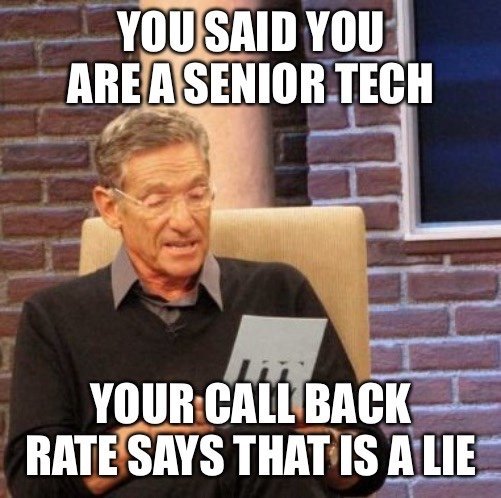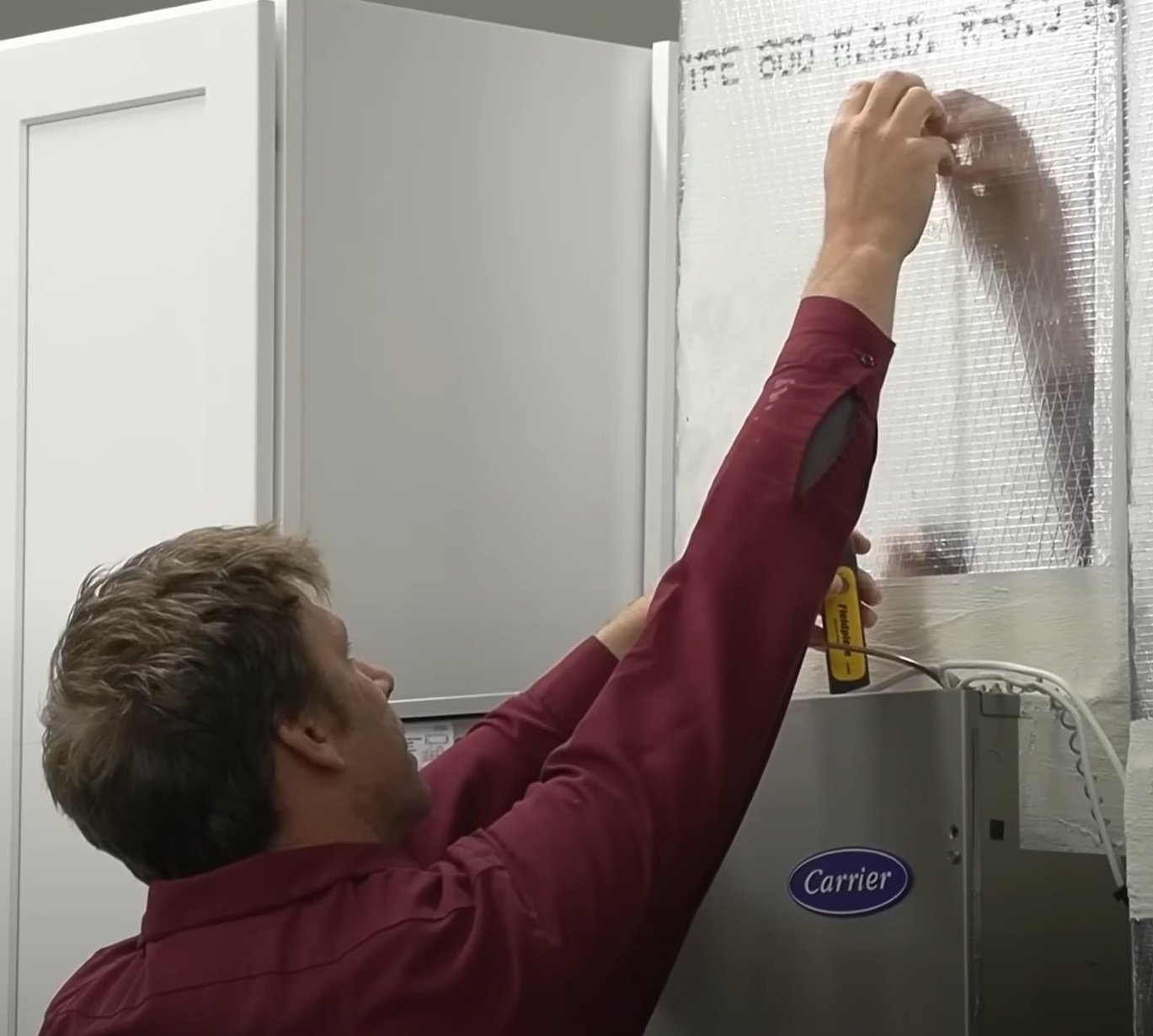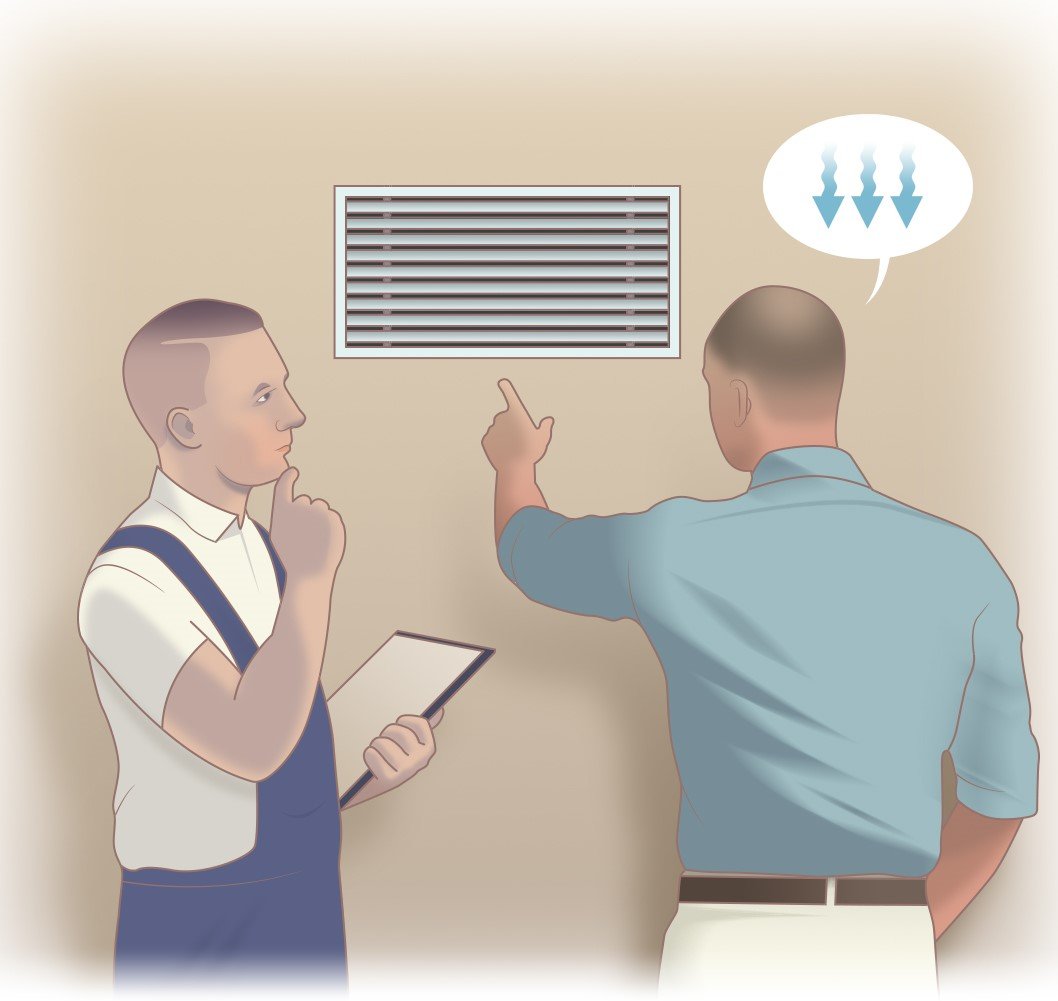Get Tech Tips
Subscribe to free tech tips.
Avoiding and Eliminating Callbacks

Callbacks are horrible. They kill the trade from every possible angle. They destroy customer satisfaction and reduce technician morale by causing long hours, resulting in unprofitability for companies and less earning opportunity for everyone. Possibly worse of all, callbacks tell customers that you are no better than their cousin the maintenance man, or worse, the $35-an-hour Craigslist tech. If they wanted to call someone back, they could have just called them instead of a true pro.
Callbacks make me furious!
They have always made me furious. Back when I was a tech, there was NOTHING I hated more than having a callback. Wait, I take that back. I hated being accused of a callback when it wasn't a callback in my mind even more!
Since those immature days of pitching a fit whenever I got a callback, I have developed my definition of what is and isn't a callback.
Callbacks are:
- Anytime an installation or repair error is made due to overlooking a problem or doing it incorrectly, regardless of how long ago it occurred
- When a customer calls back for a similar issue on the same piece of equipment within 30 days, even if it isn't the exact same problem
- Cases where the customer cannot be charged for the work performed due to its relationship to prior work
- Calls back out or complaints due to a failure to communicate, diagnose, or repair completely
We have learned that the only way to prevent callbacks reliably is to develop systems and processes that actively PREVENT callbacks rather than assuming that they won't occur if you are a good tech. Often, we would blame the customer, the follow-up tech, or faulty parts for callbacks when we actually had the power to prevent them if we were more proactive. Here is what we learned.
Look Around More Carefully

Before you start diagnosis with tools, look over the equipment for anything abnormal. Strange sounds, signs of abnormal condensation, and oil spots can all be signs of trouble. Look for wire rubouts, loose connections, and arcing. If it looks like work was done recently, double-check that the correct parts were used and installed properly. If wires are a mess, electrical connections exposed, refrigerant lines rubbing out, or severe corrosion/deterioration on critical metal parts, you should address it with the customer.
Never just fix the first problem you find and leave. If that's all you do, you will miss opportunities to serve the customer better. (And you probably won't reduce your callback rate by much, either.) In my experience, the vast majority of systems have either initial installation/commissioning deficiencies, maintenance issues, abrasion concerns, or just plain faults that get missed when the tech fixes only the first and most obvious problem.
Diagnose More Precisely

The proper and full diagnosis of HVAC/R equipment isn't that difficult if you are using the proper tools and techniques, but we still hear techs say, “It should be fine,” when looking at a charge, or, “That looks pretty normal,” when taking an amperage reading. A good diagnostician doesn't guess about those things. The best diagnosticians know how to take readings and check if a unit is operating within its design specs.
The system is either within design specifications or needs repair, alteration, or upgrades, and you need to communicate with the customer about it. KNOW the target evaporator DTD, condenser CTOA, motor RLA, and system design capacity vs. delivered capacity for the piece of equipment you are working on. If you don't know what these things mean, then start HERE and download the MeasureQuick app to help.
You have to get all of the readings and figure out how they all relate to the system performance. The 5 Pillars of Diagnosis can give you a pretty good idea of what's going on with a given system. Once you stop guessing, you will get it right the first time more often and prevent some nasty callbacks.
Improve Your Workmanship

Most bad workmanship is due to poor training, tools, supplies, and real or perceived time constraints. You always have time to do the work correctly, or you need to FIND time to do it again. None of us get everything right, but you can work to improve your workmanship with every job you do, whether it is how you make a wire connection, connect ducts, or make a flare that never leaks. Get it right the first time and leave it looking like a pro did it instead of a handyman or a kid fresh out of trade school.
Keep the right tools and materials on your truck to execute great workmanship, and then do it a little better each time based on what you learn along the way. HERE is a video presentation about some installation and service best practices that help prevent callbacks. Some of those practices include flowing nitrogen while brazing, pulling a deep vacuum, and minding the space around the outdoor unit and drain outlet.
Communicate Completely

- Communicate with the customer when you arrive and listen carefully to understand ALL of their concerns, not just the obvious ones and not just the ones that are easy to repair. If the customer is concerned about a high power bill, noise, odor, or warm room, INVESTIGATE IT!
- Explain your diagnosis process to the customer before you begin working. Let them know that you will check the system as completely as possible and bring them the results of your findings before proceeding with any repairs.
- Once you find and note any and all issues, ask the customer if you can show them your findings and either bring them to the points of interest—if practical—or show them photos on your phone or tablet. Do not use fear, negativity, or drama to present the issues; be factual and to the point about the issues and prices to repair. Once the customer approves or declines each item, let them know you will make the desired repairs and then retest to ensure that there are no additional concerns once the system is up and running.
- Once you are done with the work, reiterate any remaining issues that the customer did not approve and get them to sign an invoice or document that clearly shows what was and what was not done. Once this is complete, ask the customer if they are satisfied with the service and if there is anything else you can address for them before you leave. Make sure to reiterate what you left the thermostat set to and what they should or should not expect from equipment based on the repairs made. If the customer does not have a maintenance plan in place, make sure that their paperwork includes a suggestion of maintenance and that you discuss the importance of proper maintenance with the customer.
- Fill out your paperwork fully and clearly with all work performed, work declined, and any condition issues on the equipment. Be detailed about which unit you were working on. Don't forget to write down the proper model and serial numbers.
If parts are required, make sure to get photos of EVERYTHING you can find: data tags, parts tags, boards, compressor model and serial numbers, etc. Going back to a call just to get a model number because it was missed or written down incorrectly is a huge waste of time.
A little while ago, we posted a video about communication as it relates to callback prevention. You can watch it HERE.
Eliminate the Careless Errors

Walk the job before you leave and put your tools away in their proper place. This practice will help prevent leaving disconnects out, caps off, float switches tripped, thermometers in the duct, screwdriver on the roof, etc.
Some of you are just more prone to these sorts of careless mistakes, but that is not an excuse; you need to develop systems that prevent these forgetful errors. Here are the best ways:
- Create a checklist you go over at the end of every call you review before you pick up your keys and put them in the ignition.
- Don't talk on the phone, text, or look at social media while on a call. Create a Do Not Disturb rule on your phone during the workday so that it only rings if the person calls twice in a row. Let your loved ones, manager, and dispatch know that they will need to call twice to get you if it is urgent.
- Force yourself to put tools and parts in the same place every time so that you can tell very quickly if you left or forgot anything.
- Never leave in a rush. Finishing a call is never as simple as hopping in the van and peeling out. Follow a process and think through the job before you pull away. Don't be in a hurry to “get away before the customer walks out and asks another question.” That sort of thing will get you in big trouble.
Gut Check
The final test is a gut check. If your gut tells you the diagnosis isn't right, you didn't make the repair right, or the customer isn't 100% understanding what's going on, then please DON'T LEAVE.
I know it can be tempting, especially after a long day or an especially difficult call or customer, but trust me, leaving never makes it better. Hang in there, read up on the system, perform more tests, recheck the ducts, or do whatever you need to do, but don't bail.
Sometimes, you will have a customer that you just know will turn around and call back. You can tell that they aren't listening to you about your findings. Or, maybe they have a misunderstanding about the system operation. When working with these customers, you want to MAKE SURE you get your recommendations in writing—clearly spelled out—with a signature.
If you really want to ensure that you don't get a callback, spend 15 extra minutes and write them a nice, positive email. Copy your dispatcher and your service manager with a description of what you found, what you recommended, what you repaired, any system condition issues, and how they should expect the system to operate with photos attached. It will really reduce those immediate callbacks from difficult customers.
- Observe the entire system
- Diagnose all the issues
- Test the system fully
- Communicate through the entire process
- Follow a process to ensure you don't miss anything silly
—Bryan
P.S. — The ESCO Institute's HVACR Learning Network has a free course dedicated to mini-split installation and maintenance, and it has a lot of good information about callback prevention. You can enroll in the free course HERE. It also offers a NATE CEH/CEU certificate.











Comments
Couldn’t have said it better myself.
Couldn’t have said it better myself.
Spot on!
Spot on!
As I was reading, I was hoping to find the part regarding the importance of a good callback system. Something preventative. I am currently an HVAC trainer at a company that has callbacks, but no callback system to relay to the installer what/where/when the call back occurred. We have 5 departments which make callback/errors: Service, Install, Sales, Admin, Factory. They all influence each other. To me, a well oiled callback system is a priority, but what do you think? How can I suggest to my employer the importance of this system of communication? Needing some help. This will be helpful as we are entering a new era in the windy city: Cold Climate Air to Air Heat Pumps.
As I was reading, I was hoping to find the part regarding the importance of a good callback system. Something preventative. I am currently an HVAC trainer at a company that has callbacks, but no callback system to relay to the installer what/where/when the call back occurred. We have 5 departments which make callback/errors: Service, Install, Sales, Admin, Factory. They all influence each other. To me, a well oiled callback system is a priority, but what do you think? How can I suggest to my employer the importance of this system of communication? Needing some help. This will be helpful as we are entering a new era in the windy city: Cold Climate Air to Air Heat Pumps.
Similar situation for myself, “departmentalized” company with a divide between service and install. What we have setup is a weekly callback report from service to installation departments, and can pull these reports as far back as necessary. There is also a shared approach to handling the initial callback as it comes in, depending on time since install/service completed.
It is then up to department lead techs to brief their other techs responsible in a group or individual setting on the cause and solution. only to serve as a reminder and not punishment infront of their peers. The end goal is ownership of mistakes and awareness for the future.
If there is a recurring theme to the callbacks there is generally a meeting held where the topic will be broken down and people can weigh in on the issues causing this to repeat.
One of the common occurences with quality related issues or missed setup issues is time, techs feeling a time crunch will often skim manuals at best, miss important information etc.. or rush their pressure tests/evac and call it good, or arent patient enough to do a complete comissioning that would catch issues when the system is at its max capacity etc.. being thorough is about being patient and self aware of the steps to take in what order. we use checklists to help techs complete a job and create a reminder as they wrap up.
Hope that helps..
Similar situation for myself, “departmentalized” company with a divide between service and install. What we have setup is a weekly callback report from service to installation departments, and can pull these reports as far back as necessary. There is also a shared approach to handling the initial callback as it comes in, depending on time since install/service completed.
It is then up to department lead techs to brief their other techs responsible in a group or individual setting on the cause and solution. only to serve as a reminder and not punishment infront of their peers. The end goal is ownership of mistakes and awareness for the future.
If there is a recurring theme to the callbacks there is generally a meeting held where the topic will be broken down and people can weigh in on the issues causing this to repeat.
One of the common occurences with quality related issues or missed setup issues is time, techs feeling a time crunch will often skim manuals at best, miss important information etc.. or rush their pressure tests/evac and call it good, or arent patient enough to do a complete comissioning that would catch issues when the system is at its max capacity etc.. being thorough is about being patient and self aware of the steps to take in what order. we use checklists to help techs complete a job and create a reminder as they wrap up.
Hope that helps..
To leave a comment, you need to log in.
Log In